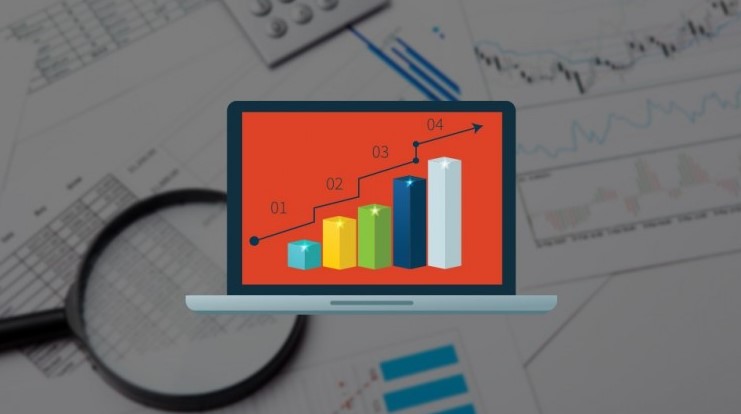3 reasons why the stock market hates the omicron variant: Morning Brief
This article first appeared in the Morning Brief. Get the Morning Brief sent directly to your inbox every Monday to Friday by 6:30 a.m. ET. Subscribe
Monday, December 6, 2021
Most investors will enter this week confused after battling through another topsy-turvy trading week.
Bitcoin nosedived at its worst by 20{1b90e59fe8a6c14b55fbbae1d9373c165823754d058ebf80beecafc6dee5063a} over the weekend (more on that below). Last week, the S&P 500 saw five straight losses of at least 1{1b90e59fe8a6c14b55fbbae1d9373c165823754d058ebf80beecafc6dee5063a} at one point each day, according to Bloomberg data. Small-cap stocks as measured by the Russell 2000 are officially in a correction.
Does one brave these rockier waters and buy the dip? After all, the strategy has worked wonders in the past five years as markets have been awash in liquidity. What I say is to sit tight. Honestly, you shouldn’t be confused at all given the economic implications of the new Omicron variant (and potentially others) and the Federal Reserve soon pulling back the liquidity punch bowl.
I think the team at Goldman Sachs led by Jan Hatzius nicely summed up this weekend why you should be hesitant to buy dips in the market in the near-term. In other words, the market has been right to hate the Omicron variant:
“First, Omicron could slow economic reopening, but we expect only a modest drag on service spending because domestic virus-control policy and economic activity have become significantly less sensitive to virus spread.
Second, Omicron could exacerbate goods supply shortages if virus spread in other countries necessitates tight restrictions. This was a major problem during the Delta wave, but increases in vaccination rates in foreign trade partners since then should limit the scope for severe supply disruptions.
Third, Omicron could delay the timeline for some people feeling comfortable returning to work and cause worker shortages to linger somewhat longer.”
The read here: the market probably hasn’t priced in anything Hatzius discusses above from an economic standpoint. It’s currently in the process of figuring things out. Hatzius slashed his first quarter 2022 GDP estimate to 3{1b90e59fe8a6c14b55fbbae1d9373c165823754d058ebf80beecafc6dee5063a} from 4.5{1b90e59fe8a6c14b55fbbae1d9373c165823754d058ebf80beecafc6dee5063a} primarily due to the spreading Omicron variant.
Then the other component at play is in fact the new Jerome Powell-led Fed in 2022, one that is more focused on controlling inflation than providing support to asset markets. To that end, Bank of America’s Chief Investment Strategist Michael Hartnett sets the stage very well for 2022 in this new Fed era:
“2021-22 investment backdrop we say similar to early stagflation of late-60s, early70s … period of inflation & interest rates breaking higher from secular low/stable trading ranges on back of high budget deficits, Vietnam, “Great Society” policies, civil unrest, political and acquiescent Fed; late-60s/70s “stagflation” winners were real assets, real estate, commodities, volatility, cash, emerging markets, all of which held their own versus inflation; losers were bonds, credit, equities, tech, all of which ultimately struggled; we think we’re in the ’69-’71 period.”
Harnett is bearish on 2022, and expects a “rates shock” and tightening financial conditions.
Happy trading! And remember, what goes up must eventually come down.
Odds and ends
Cryptocurrency: Yahoo Finance Editor-in-chief Andy Serwer and crypto reporter David Hollerith did expert jobs this weekend covering the rout in bitcoin prices (down 20{1b90e59fe8a6c14b55fbbae1d9373c165823754d058ebf80beecafc6dee5063a} at one point on Saturday). So I won’t spend a lot of time on it, other than to say exuberant crypto asset prices are about to be put to the test as the Fed moves off peak liquidity. Those asset prices could also be put to the test this week as the CEOs of six major crypto companies testify at a Dec. 8 hearing of the House Financial Services Committee titled “Digital Assets and the Future of Finance: Understanding the Challenges and Benefits of Financial Innovation in the United States.” I am very interested to see if execs from Paxos, FTX, Coinbase, Circle, Stellar Development Foundation and Bitfury tell the likes of Congresswoman Maxine Waters that they want more regulation. Now is the group’s chance to send along that message, which is one I have been hearing from crypto people for over a year. I’ll reiterate: Be careful what you wish for, crytoverse.
Stock market bubble: Berkshire Hathaway’s Charlie Munger’s comments last week on valuations being crazy just like the 2000 dot-com bubble were well taken. I don’t agree 100{1b90e59fe8a6c14b55fbbae1d9373c165823754d058ebf80beecafc6dee5063a} with the billionaire’s hot take, but it doesn’t take a rocket scientist to see pockets of excess in all sorts of markets at the moment (even in a market off its mid-November record highs). But to push back on Munger’s musings, look no further than this year’s IPO market. Bank of America strategist Jill-Carey Hall points out the number of traditional (non-SPAC) deals year-to-date is tracking the highest since the aforementioned tech bubble of 2000. BUT, as a percentage of market cap, deal value is half of 1999 levels. Sure doesn’t look bubblelicious to me, but then again what do I know, Munger’s net worth is 4,000 times mine (a rough guess).
DocuSign: Friday was a session for DocuSign that falls under the category for me of “wow, I haven’t seen that in a while.” Shares crashed 42{1b90e59fe8a6c14b55fbbae1d9373c165823754d058ebf80beecafc6dee5063a} by the close of trading as the company is experiencing slowing growth that took execs by surprise. Hat tip to DocuSign CEO Dan Springer for even coming on Yahoo Finance Live to talk with me and Zack Guzman, while the company’s stock plunged 40{1b90e59fe8a6c14b55fbbae1d9373c165823754d058ebf80beecafc6dee5063a}. Having said that, watch DocuSign for a short-term dead cat bounce this week — Springer told us he is buying $5 million in company stock on Tuesday because the market reaction looks very overdone. I suspect he won’t be alone in trying to pick the bottom.
Small-cap stocks: Few sectors have been harder hit during this two week or so sell-off than small caps, or those of companies with outsized exposure to the U.S. economy. The small-cap Russell 2000 has tanked 12{1b90e59fe8a6c14b55fbbae1d9373c165823754d058ebf80beecafc6dee5063a} from its recent high on Nov. 8, per Yahoo Finance Plus data. Yahoo Finance’s markets wizard Jared Blikre notes on Twitter the iShares Russell 2000 ETF is now at “old” support levels on the charts. The selling pressure may not yet be over, small-cap experts contend.
“Given the uncertainty around the new variant and the economy, it is hard to see investors wanting to add risk heading into year-end,” says Steven DeSanctis, Jefferies’ small and mid-cap strategist (known on Wall Street as the “SMID” strategist). “When these issues are resolved, and we think that will be sooner rather than later, we see small spiking higher, like it has done numerous times since the low in March 2020. We would not be surprised to see a real January Effect with small leaping higher, beating large, and the cyclicals leading the way,”
Have no clue what the January Effect is? Give this a quick read from our friends at Investopedia.
Brian Sozzi is an editor-at-large and anchor at Yahoo Finance. Follow Sozzi on Twitter @BrianSozzi and on LinkedIn.
Yahoo Finance Highlights
Wall Street’s 2022 outlook for stocks
2 big market risks for 2022, according to Bank of America
Doctor: We’re preparing for ‘a potential perfect storm’ with Omicron and winter
—
Read the latest financial and business news from Yahoo Finance
Follow Yahoo Finance on Twitter, Instagram, YouTube, Facebook, Flipboard, and LinkedIn








